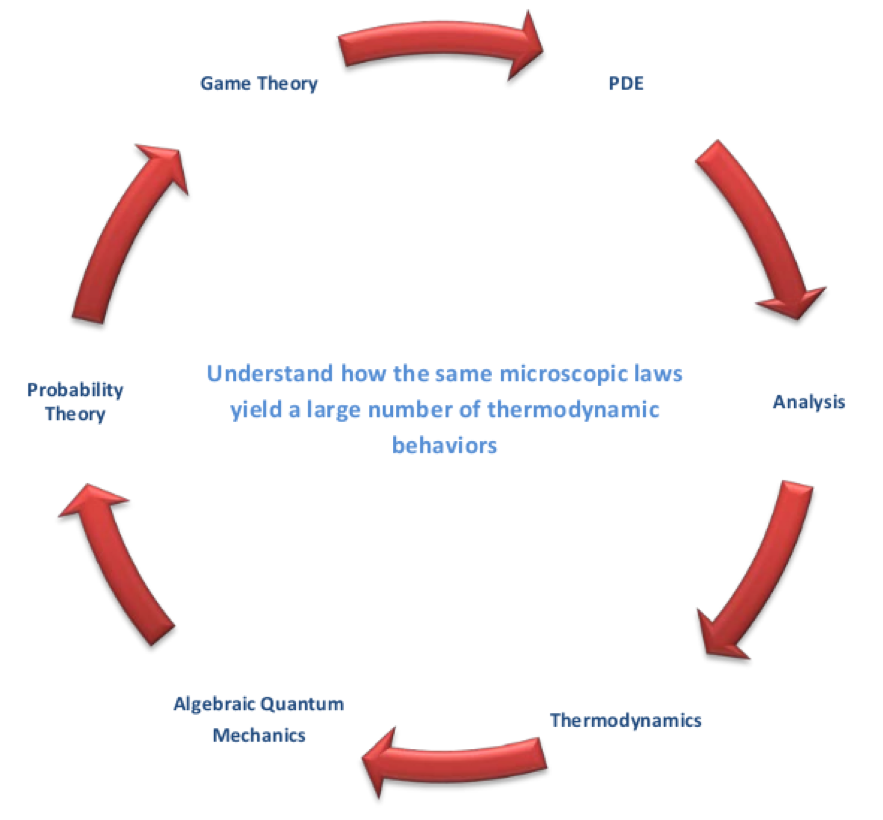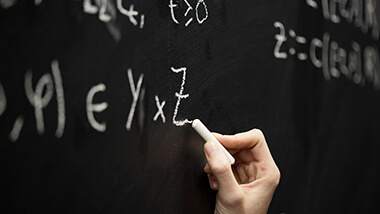QM
Quantum Mechanics
The group mathematically studies quantum many-body systems, with a special focus on quantum transport of interacting systems. It refers to the use of various fields of Mathematics like convex and functional analysis, operator algebras, constructive methods in QFT, etc.
The Quantum Mechanics group is strongly based on J.-B. Bru and W. de Siqueira Pedra’s mathematical works on quantum many-body theory, which is an important domain of mathematical physics. It mainly refers to rigorously understand the close connection between microscopic, mesoscopic and macroscopic properties of quantum systems. In mathematics, it is reminiscent of Hilbert's sixth problem, among his 23 problems which have been authoritative for the twentieth century mathematics. The expertise of the group is very diverse, going from quantum physics and astrophysics to various fields of mathematics, with a strong emphasis on convex and functional analysis, operator algebras, constructive methods in quantum field theory, etc.

Quantum many-body theory is an important domain of mathematical physics, relating to the derivation of effective, or phenomenological, theories from microscopic laws. The group especially focuses on the understanding of quantum transport for interacting systems, which is a major issue of mathematical physics, but also a notoriously difficult subject of Mathematics. The hurdles that have to be overcome in order to arrive at important mathematical results involve a very rich interplay of mathematical fields such as stochastic analysis, operator algebras, differential equations, or functional and convex analysis. Meanwhile, in Physics, extraordinary experimental achievements on transport properties of nanometric systems or quantum many-body systems like ultracold atoms, trapped ions, etc. have over the last decades sparked the interest in understanding more deeply quantum transport of many-body systems. Many-body localization, the only known robust mechanism preventing from thermalization in a closed system, is one paramount example of the need of mathematically understanding interaction effects on transport theory.


